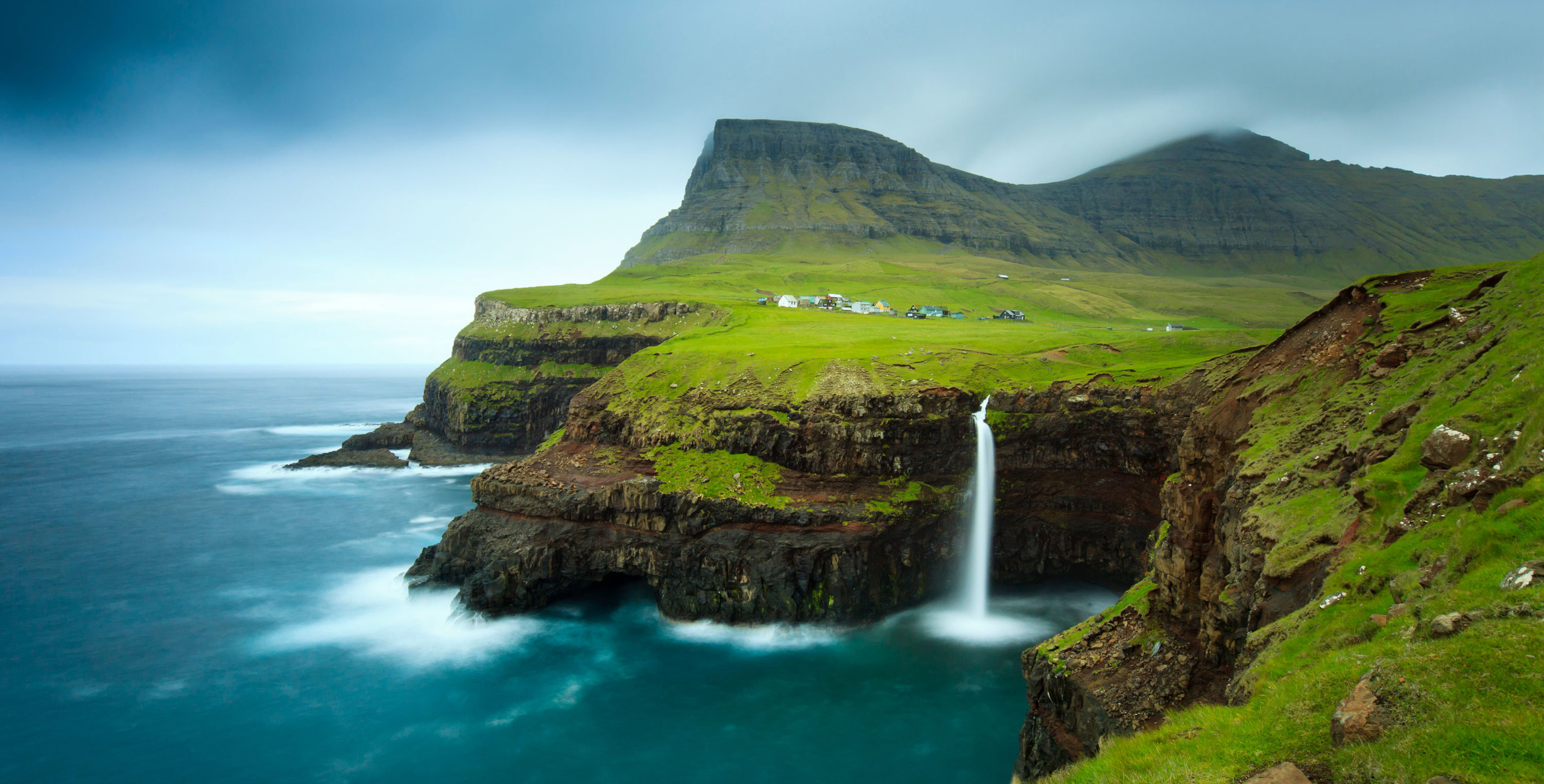
In the middle of the North Atlantic, where the warm waters of the Gulf Stream meet the cold waters of the Arctic, injecting the oceans with their global energy – lie the Faroe Islands, a nation of 50,000 people living at the very heart of the global climate and weather machine.
The island group is located at the Sub-Arctic doorstep of the great climate conveyer belt, with vast amounts of warm Gulf Stream surface water heading northeast, and deeper down the icy cold stream of Arctic water heading the opposite way.
The climate of the Faroe Islands is classed as Maritime Subarctic according to the Köppen climate classification.
The overall character of the islands' climate and weather is influenced by the strong warming influence of the Atlantic Ocean, which produces the North Atlantic Current.
What surprises many that visit the Faroe Islands is the relative mildness of the Faroese weather seasons.
Despite the islands’ northern latitude location, summers are cool with an average temperature of 12°C, and winters are mild, with an average temperature of 3°C.
Summer days bring long hours of sunlight (19 hours, 45 minutes on the longest day, June 21). In contrast, days during the winter can be as short as five hours.
The Faroe Islands are generally windy, cloudy and cool throughout the year. The Faroe Islands lie in the path of depressions moving northeast and this means that strong winds and heavy rain are possible at all times of the year.
In wintertime the Faroe Islands are at times struck by stormy weather and hurricanes with winds over 100 mph. One of these hurricanes was the notorious Christmas Hurricane (Jólaódnin) that struck the Faroe Islands December 21 1988 and cause extensive damages all over the islands.
Variations in altitude, ocean currents, topography and wind mean the weather differs greatly, even though distances between locations is small.
This makes for unpredictable and highly changeable weather. It is not uncommon for one location to experience rain, followed by snow, and then sun.
You can literally experience all four weather seasons in one day!
The Ocean is a breadbasket and a bridge
The people of the Faroe Islands know very well that even the slightest shift in ocean dynamics can have huge impacts on the weather and everyday life.
Over the centuries the Faroese have learnt to understand and respect the nature and weather forces and fluctuations of the stormy seas around them and to make the most of their valuable resources.
With a firm grip on the realities of island life in the middle of the ocean, they see the North Atlantic as a breadbasket and bridge, not a barrier.
The Faroese contribution to addressing the global challenge of climate change will be to develop the huge potential in the Faroe Islands for new technologies in clean and self-sufficient energy production.
The Faroe Islands are already at the forefront when it comes to increasing fuel efficiency at sea and minimizing the impacts of fisheries on the marine ecosystem.
The challenge and opportunities for the Faroe Islands is to find new ways to tap into the powerhouse of the North Atlantic Ocean on their very doorstep, and to apply their intimate knowledge of the sea and windy weather and their valuable resources in ways that can also benefit other nations and communities around the world.
Faroe Islands is one of the world’s leading nations in producing sustainable electricity. There is a great potential in the Faroe Islands for the exploitation of renewable energy: hydropower, wind and tidal power. Indeed, by utilizing rain water and wind the Faroe Islands already produce more than 50 % of their electricity from these renewable sources.
The main energy supplier of the Faroe Islands, SEV, has officially announced that their goal is to have 100% green energy production by 2030.
A major step towards this goal has been the installation of a brand new windfarm in Húsahagi outside Tórshavn in 2014. One of the next big projects is to develop the tidal power sector.
The currents around the Faroe Islands have been extensively researched, and the islands are receiving a lot of attention from foreign investors, for their suitability as a testing site.